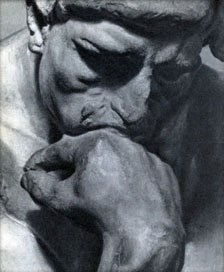Oxford Calculators a group of natural philosophers, mathematicians, and logicians who flourished at Oxford University in the second quarter of the fourteenth century. The name derives from the Liber calculationum (Book of Calculations), written some time before 1350. The author of this work, often called ‘Calculator’ by later Continental authors, was probably named Richard Swineshead. The Book of Calculations discussed a number of issues related to the quantification or measurement of local motion, alteration, and augmentation (for a fuller description, see John Murdoch and Edith Sylla, ‘Swineshead, Richard,’ in Dictionary of Scientific Biography, Vol. 13, 1976). The Book of Calculations has been studied mainly by historians of science and grouped together with a number of other works discussing natural philosophical topics by such authors as Thomas Bradwardine, William Heytesbury, and John Dumbleton. In earlier histories many of the authors now referred to as Oxford Calculators are referred to as the Merton School, since many of them were fellows of Merton College. But since some authors whose work appears to fit into the same intellectual tradition (e.g., Richard Kilvington, whose Sophismata represents an earlier stage of the tradition later epitomized by William Heytesbury’s Sophismata) have no known connection with Merton College, the name ‘Oxford Calculators’ would appear to be a more accurate appellation.
The works of the Oxford Calculators were produced in the context of education in the Oxford arts faculty (see Edith Sylla, ‘The Oxford Calculators,’ in Norman Kretzmann, Anthony Kenny, and Jan Pinborg, eds., The Cambridge History of Later Medieval Philosophy, 1982). In Oxford at this time logic was the centerpiece of the early years of undergraduate education. After logic, Oxford came to be known for its work in mathematics, astronomy, and natural philosophy. Students studying under the Oxford faculty of arts not only heard lectures on the liberal arts and on natural philosophy, moral philosophy, and metaphysics; they were also required to take part in disputations. William Heytesbury’s Regule solvendi sophismatum (Rules for Solving Sophismata) explicitly and Swineshead’s Book of Calculations implicitly are written to prepare students for these disputations. The three influences most formative on the work of the Oxford Calculators were (1) the tradition of commentaries on the works of Aristotle; (2) the developments in logical theory, particularly the theories of categorematic and syncategorematic terms and the theory of logical supposition; and (3) developments in mathematics, particularly the theory of ratios as developed in Thomas Bradwardine’s De proportionibus velocitatum in motibus (On the Ratios of Velocities in Motions). In addition to Richard Swineshead, Heytesbury, Bradwardine, Dumbleton, and Kilvington, other authors and works related to the work of the Oxford Calculators are Walter Burley, De primo et ultimo instanti, Tractatus Primus (De formis accidentalibus), Tractatus Secundus (De intensione et remissione formarum); Roger Swineshead, Descriptiones motuum; and John Bode, A est unum calidum. These and other works had a considerable later influence on the Continent. See also BURLEY, COMMENTARIES ON ARIS- TOTLE , HEYTESBURY , KILVINGTO. E.D.S.
